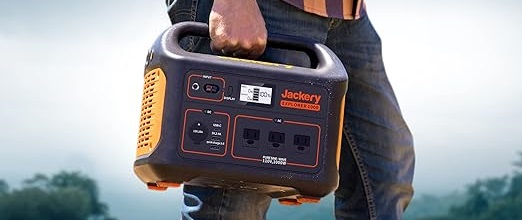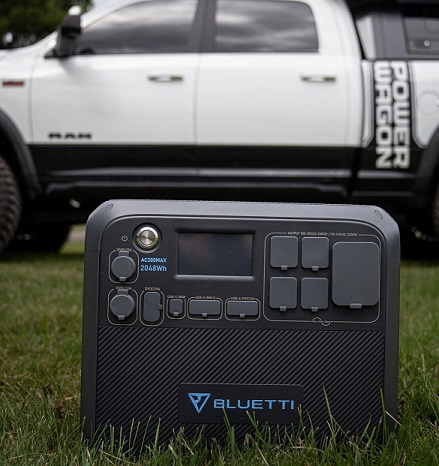
How Do You Size A Portable Power Station?
Table of Contents
The best way to size a portable power station is by determining the number of watt-hours needed for your specific application, and then adding a buffer of 10 to 25% to account for efficiency losses and not stress the battery pack.
Understanding Watt-hours and Device Requirements
So, you may be wondering ‘How do I know what size power station I need?’ Let's start with the basics. The average smartphone uses approximately 20 watt-hours. So, if you want to recharge a smartphone ten times, you'll need a minimum of 200 watt-hours. A high-intensity LED light might consume 30 watts. To run it for 10 hours, you require 300 watt-hours. The amount of watt hours you need can be determined by multiplying the load watts by the number of hours you want to run it.
Remember, no system is 100% efficient. To avoid under-calculating your needs, adding an additional 10% when planning your power station will ensure you compensate for efficiency losses due to regulators.
Factoring in High Current Devices
Are you planning to power high-amperage AC devices, like a window unit air conditioner, with your portable power station? If so, then you will need a much larger current carrying capacity. An air conditioner consumes about 500 watts. So, if you aim to run it for two and a half hours, you'll need a hefty 1250 watt-hours before accounting for efficiency losses. Though most portable power stations might not support such high-amperage devices, it's still useful information to remember.
So, What Can A 1000 Watt Power Station Run? A 1000W power station is quite powerful. It could run several appliances like a small fridge, blender, or even a dishwasher. Such a power station would also have no problem running a flat-screen TV, fans, and light power tools. To find out how much current it takes to get to 1000W, simply divide 1000 by the nominal voltage of your battery.
Considering Current Alongside Capacity
Calculating capacity is far from the only factor when sizing a power station. If you're operating high-end equipment, current plays a crucial role. Ensure the cells you select and their configuration can support the required current.
For example, a 24-volt power station would need 7 cell groups in series. If you are using cells that can do 10 amps and you only put 1 cell in each group, you will only be able to do around 240 watts. This is one of the reasons why more cells are put in parallel groups. By adding more cells in each parallel group, you increase both the current carrying capacity and the battery run time.
So, to run a 500-watt load at 24 volts with 10 amp cells, you would need at least 3 cells in parallel. This will give you a current carrying capability of 30 amps, which comes out to 720 watts in a 7S3P configuration.
Oversizing for Longer Battery Life
Unless budget constraints prevent you from doing so, your portable power station should always be slightly larger than your immediate needs. This isn't just for accounting for efficiency losses, but also to prolong the battery lifespan. So, after calculating for efficiency losses, add an extra 25% to your estimate.
This additional buffer ensures you're not continually draining the battery to its last breath, extending the overall cycle life of the battery.
For example, if you aim to recharge 20 smartphones, calculate as follows: 20 watt-hours x 20 = 400 watt-hours. Add 10% for inverter or converter losses, reaching 440 watt-hours. Then add another 25% buffer. The final figure comes out as approximately 550 watt-hours.
Other Portable Powerstation Sizing Concerns
Other than making sure your portable powerstation battery has enough capacity there are a few other things to make sure you have the correct sizing on.
Inverter: Ensure the inverter built into the power station can provide the necessary AC output for your devices, taking into account their peak and continuous power requirements. If a device you are trying to power uses 1000W make sure the inverter is rated for at least 10% more.
Port Types: Check the battery connector types and quantity of power outlets (AC, DC, USB) available to accommodate your devices. Ensure they match the plugs of the devices you intend to power.
Charging and Charge Rate: Keep in mind how you'll recharge the power station, whether via solar panels, wall outlets, car outlets, or a combination of these options.
Calculating the Number of Cells Needed
For a concrete example, consider a common 18650 cell with an output of about 3 amp-hours. Multiplying the 3 amp-hours by its nominal voltage of 3.7, we get 11.1 watt-hours. For a 550-watt-hour requirement, we divide 550 by 11.1, leading us to the conclusion that we need about 50 cells. You can also check out our battery calculator for help with the math on this.
For a 24-volt power station, we would require seven cells in series. Therefore, with 50 cells, we get about seven sets of seven in parallel (7s 7p). For a 12-volt power station using NMC chemistry, you can get close to your requirement with a 3s configuration. Dividing 50 by 3, we get about 16. So, to achieve roughly 550 watt-hours, a 3s 16p configuration would work.



